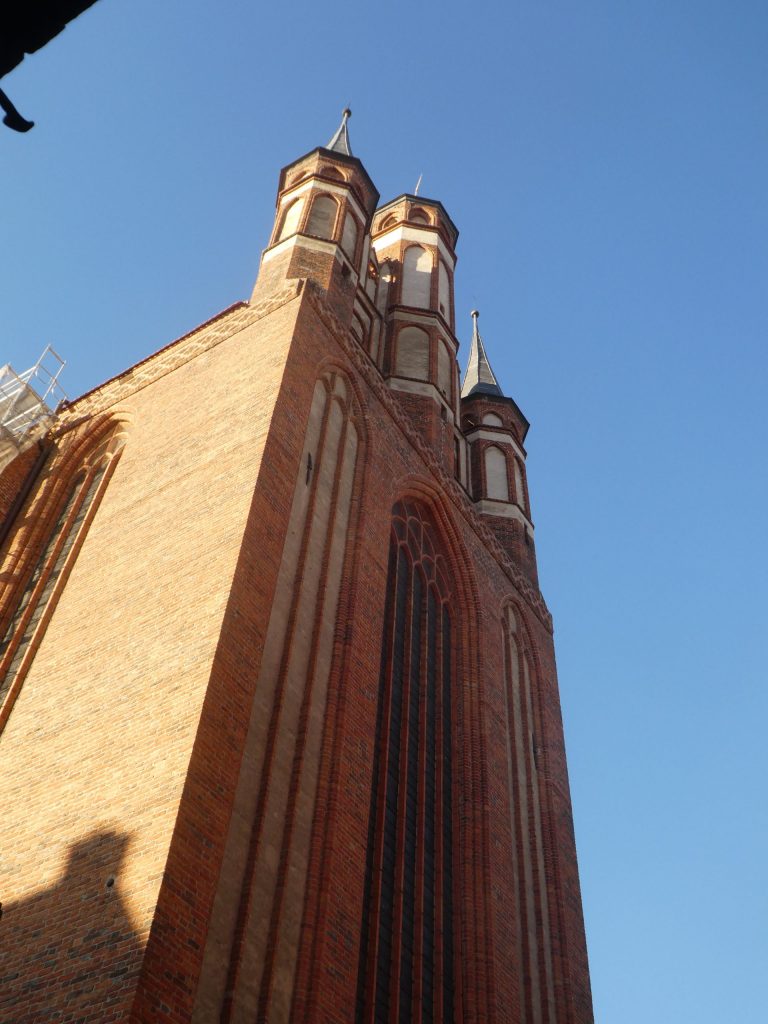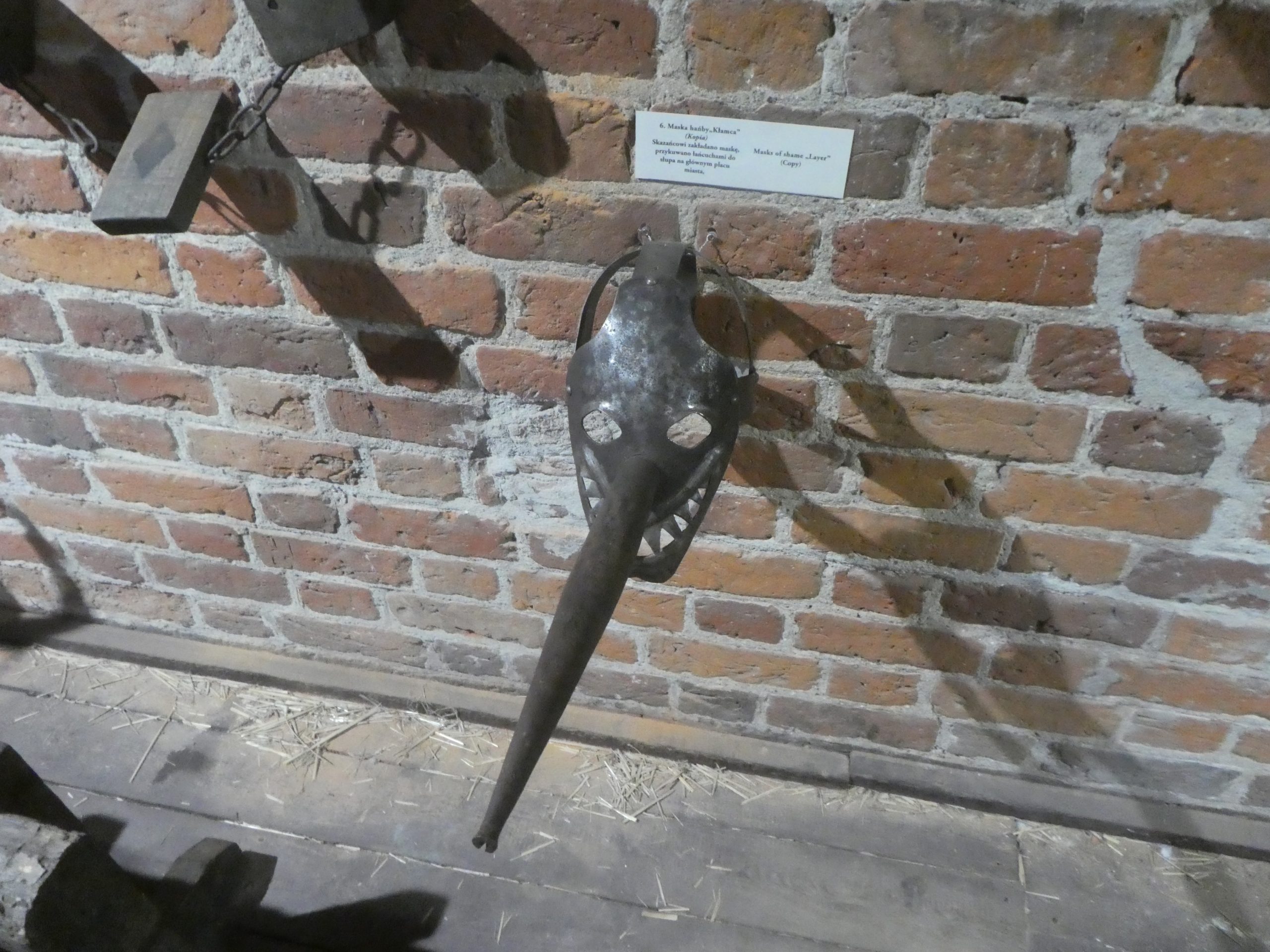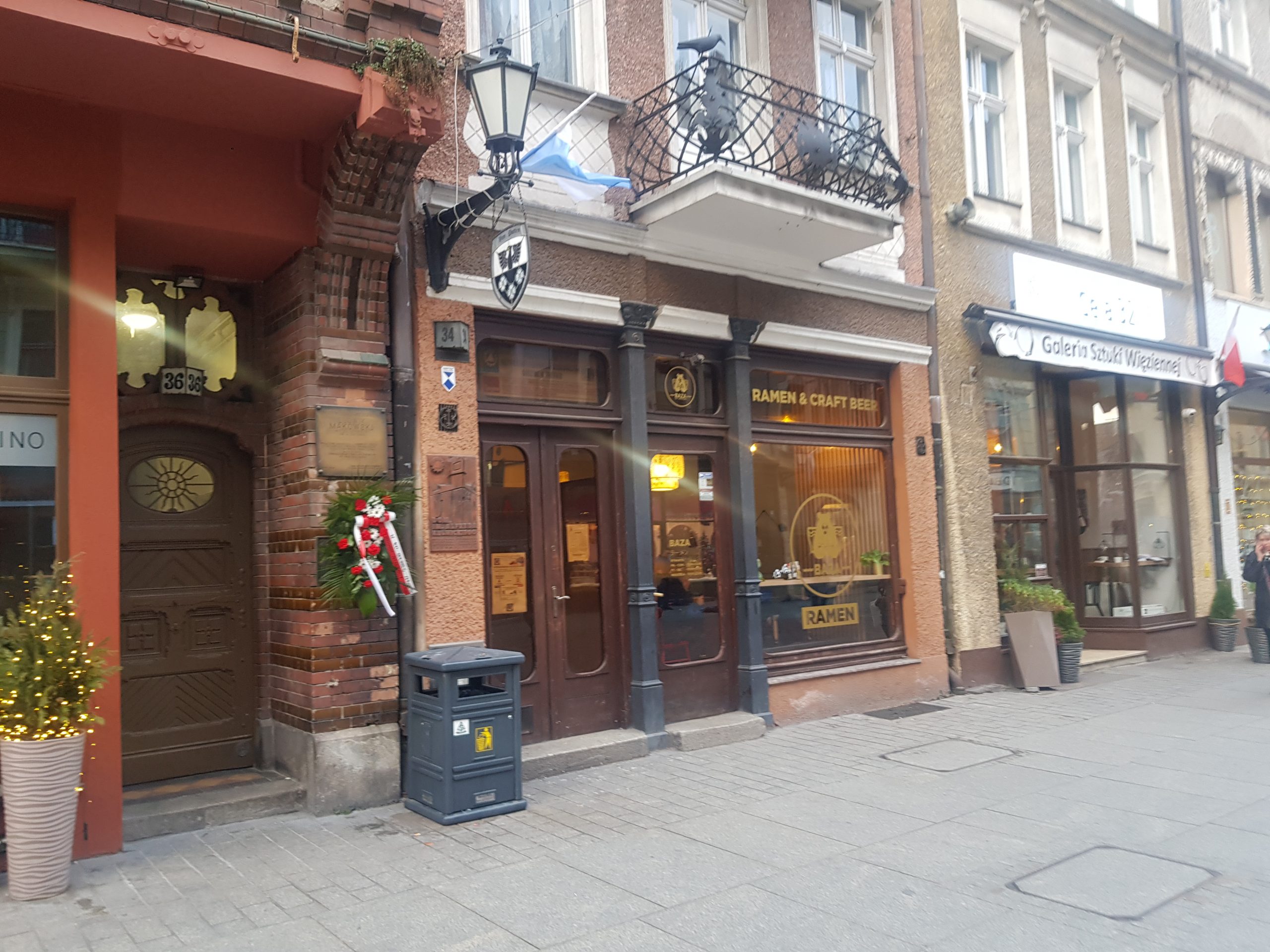Torun – Church of the Blessed Virgin Mary
The Church of the Blessed Virgin Mary (or in Polish, Kościół Wniebowzięcia Najświętszej Marii Panny w Toruniu) is one of the most beautiful historic churches that I’ve visited, although I found it a very challenging building to understand and there is much that I didn’t comprehend. The church is currently undergoing some renovations part-funded by the European Union and there’s not currently any literature to guide visitors.
The nave of the church and the rood screen, which dates to the eighteenth century. There is some scaffolding visible as well which is either supporting the building, which has had problems before with leaning, or it’s for the renovation.
The floor is a patchwork of mostly damaged stones, there’s lots of heritage there.
There are no shortage of wall paintings in the church.
One of the tombs in the church.
More wall painting and what I think is a nineteenth century stained glass window. There are three naves in the church, which once all had their own individual roofs, but they were given one large single roof in 1798.
I couldn’t ascertain the age of this arch, but I assume it’s from the earliest stage of the church’s history. And, this is the fourth church on the site, with the first having been built here in the early thirteenth century. Work started on the current church in the late fourteenth century, with the work overseen by the Franciscan friars. I hadn’t realised that Franciscan buildings don’t have towers, hence why the construction is as it is.
Things changed somewhat in 1557, when the church was taken over by the Protestants until what is wonderfully known as the Torun Tumult of 1724. The unfortunate consequence of this tumult, which were battles between Catholics and Protestants, were punishments including the death penalty and some buildings were damaged or destroyed. From 1724, the church was given to the Bernardine friars, who looked after it until it was taken over by the parish in 1821 when the order was dissolved. The church had been badly damaged during the sieges of Torun in 1809 and 1813, so necessary repairs were undertaken between 1825 and 1830.
The Christmas nativity scene, which I’d have thought must be going soon since it’s now the second half of January.
The architecture of this building is so complex and I was conscious that I didn’t understand it and I’m sure that I missed some interesting and intriguing pieces of history. Nonetheless, it’s a glorious church and it felt like it had some considerable heritage. It was also the coldest church, in temperature terms, that I’ve ever been in, with quite a dark feel in places where the light couldn’t get really permeate. However, that gave the building even more atmosphere, it felt all quite spiritual.










